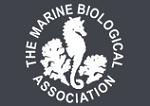APHOTOMARINE
An educational resource dedicated mainly to the photography
and diversity of marine life that can be found in coastal waters
and intertidal areas of Great Britain and Ireland by David Fenwick.

Dercitus (Dercitus) bucklandi
- in crevice on overhang 1
Black tar sponge
Dercitus (Dercitus) bucklandi
- in crevice on overhang 2
Black tar sponge
Leuconia nivea
- in crevice on overhang 3
Black tar sponge
Dercitus (Dercitus) bucklandi
- close-up 1
Black tar sponge
Dercitus (Dercitus) bucklandi
- close-up 2
Black tar sponge
Dercitus (Dercitus) bucklandi
- microscope image of calthrop showing axial canal 1
Black tar sponge
Dercitus (Dercitus) bucklandi
- calthrops 0.1mm division rule 1
Black tar sponge
Dercitus (Dercitus) bucklandi
- microscope image of spicule / microscleres / toxa 1
Specimen typically found bridging a small crevice on an overhang on the extreme lowershore at Watermouth Cove Holiday Park (private beach), near Ilfracombe, Devon, 13.06.18.
This species is unlikely to be confused with any other species in the UK due to its colour although the grey Pachymatisma johnstonia can be found in crevices in similar habitats.
APHOTOMARINE supports open source data recording and sharing for the benefit of wildlife, recorders, research, science and education. The project recommends the following websites and works with the following bodies and organisations.
A website based on Sponges of the British Isles 1992 Edition, revised and extended, 2007, by Bernard Picton, Christine Morrow & Rob van Soest. Without a shadow of a doubt the best online resource to sponges of Britain and Ireland.
The Marine Biological Association or MBA, based in Plymouth, is one of the world’s longest-running societies dedicated to promoting research into our oceans and the life they support. Since 1884 the MBA has been providing a unified, clear, independent voice on behalf of the marine biological community.It has a growing membership in over 40 countries.
The National Biodiversity Network or NBN is a charity that supports open source data sharing and recording supporting conservation, science and education. "Why do recorders need open source?". Simply because it supports the core values of wildlife recording and the free use of records and data over a very wide network that includes partners like the Natural History Museum.
The taxonomy used here is based on that of the following database, which is also used by the MBA, NHM and the NBN.
The World Register of Marine Species or WoRMS.

